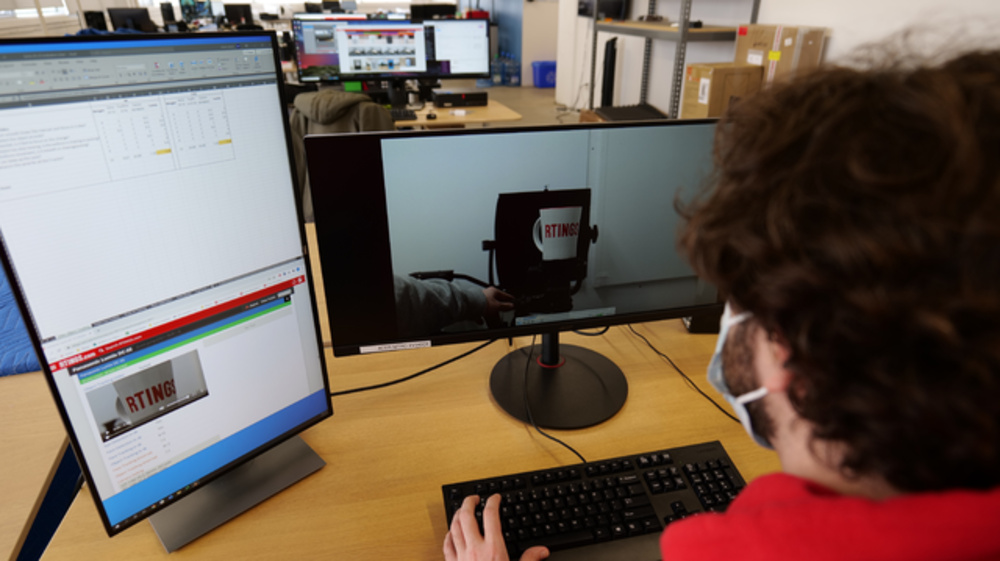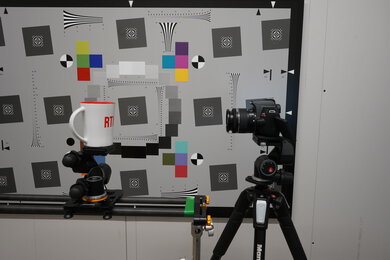4k recording capability has become more and more widespread in recent years. A wide variety of modern devices are capable of generating high-resolution videos, including built-in phone cameras and point-and-shoots like the Canon PowerShot SX740. That's also applicable to the higher end of the market, where enthusiast and professional-grade cameras, like the Fujifilm X-T4, offer 4k recording capabilities and features that could make them quite appealing to buyers who don't want or need a dedicated video camera. Of those features, video autofocus is a fairly important distinguishing factor. An effective autofocus system can help you capture sharp, clear video of subjects without needing to reach for your lens' focusing ring.
Still, despite those advancements, good overall autofocus performance in 4k recording isn't always a given. Due to the increased demands of 4k recording compared to recording in FHD, autofocus consistency and overall performance can take a hit. If you're interested in learning about some of our other test procedures, you can take a look at how we measure FHD video autofocus performance or photo autofocus performance.
Test results
When It Matters
If you're looking to quickly capture sharply rendered video of a subject without manually adjusting focus, which can be especially helpful in the case of moving subjects, an effective, quick, and reliable autofocus system is key.
While most cameras currently on the market have some form of autofocus feature, their design can vary drastically from camera to camera. There are essentially two types of autofocus systems: phase and contrast detection. In the former, which is what DSLR cameras use when looking through the viewfinder, a small part of the light entering the camera lens bypasses the main focusing mirror and is bounced off of a secondary mirror. It's then divided and directed toward multiple sensors in the camera, each of which constitutes a single focus point. These divided portions of light are then compared by the camera, which then proceeds to adjust the lens' focusing ring until all of these distinct images look identical. Once that occurs, the video is considered to be 'in focus'.
Contrast detection systems work differently. This design works by having the camera constantly monitor the degree of contrast in an image, as peak contrast levels result in a clear distinction between different objects in your photo that equates to a sharper image. Since this system doesn't use individual sensors, cameras using this technology can have an extremely high number of focus points without the associated hardware, resulting in a smaller physical package. This gives you a larger degree of freedom in being able to change what is rendered sharply in the frame without forcing you to move to recompose your shot or maintain focus on a subject as they move across the frame. However, this system can be slower than phase detection, since the system is constantly comparing focus distances to determine peak contrast, though this difference in speed may only be noticeable on older systems. Mirrorless cameras tend to use a combination of both systems, which is referred to as hybrid autofocus. These systems use phase detection using information acquired directly from their sensor to quickly acquire an approximate focus point and then use the more sensitive, but slower, contrast detection system to bring the image into sharper focus.
Our Tests
Our tests are used to measure both an autofocus system's given features as well as a rough approximation of its overall performance. It's worth noting that autofocus performance can vary drastically depending on a multitude of factors. Lighting conditions can have a big impact on overall performance since most autofocus systems rely on having enough light to determine what is and what isn't in focus.
Your choice of lens plays a large part as well. Its maximum aperture influences how much light enters the camera, which governs autofocus behavior. While a wider aperture lets in more light, it also creates a shallower depth of field, increasing the chances of an image being out of focus. Conversely, using a narrow maximum aperture lets in less light, which could negatively impact overall performance, but also results in a deeper depth of field, reducing the chances of an image being out of focus. The type of focusing motor the lens uses is also important, as some operate significantly faster and more smoothly than others.
Eye Detection In 4k
The eye detection in 4k field shows whether or not an autofocus system has an eye-detection system that's supported for 4k recording. This feature is used to identify a subject's eyes and maintain focus on them. This isn't always a common feature, as even 4k-capable enthusiast-oriented models like the Sony α6600 don't support it.
Face Detection In 4k
The face detection in 4k field shows whether or not an autofocus system has a face-detection system that's supported for 4k recording. This feature is used to identify a subject's face and maintain focus on it. This feature is very common for 4k-capable cameras, as even relatively affordable mirrorless cameras like the Canon EOS M200 support it.
Face Tracking In 4k
The face tracking success rate test is used to monitor a camera's ability to maintain focus on a moving subject that's approaching the camera head-on. To perform this test, the camera is positioned on a tripod with the lens at eye level. The autofocus system is set to continuous tracking mode, with the face and eye detection functions enabled. Videos are recorded in 4k at 30 fps, or the next fastest frame rate if the camera is unable to record 4k video at 30 fps. Shutter speed is kept at 1/60s.
| Sensor Size | Focal Length | Aperture |
| Full-Frame | 50mm | F5.0 |
| APS-C/H | 33-34mm | F3.5 |
| APS-C/H* | 41mm | F5.6 |
| Micro 4/3 | 25mm | F2.5 |
| 1" | 18mm | F1.8 |
| 1/2.3" | 22mm | F5 |
Focal length and aperture can vary depending on sensor size, with full-frame cameras using respective values of 50mm and F5.0 and APS-C cameras being set to 33-34mm and F3.5. This difference is meant to compensate for the fact that smaller camera sensors generate a deeper field of view when using the same aperture and focal length.
To gauge performance, six separate tests are conducted. In the first, 'Fast Walk', one tester walks at a quick, steady quick pace toward the camera before leaning towards it once they get close to the camera, and then exit the frame while the other records. The 'Slow Walk' test is conducted in much the same way as the 'Fast Walk', but, as the name implies, the tester being recorded moves at a slower pace.
In the next, 'Zig Zag', one tester records while the other approaches the camera with their face pointed at the camera lens before leaning toward the camera and then exiting the frame. In the 'Turn Around' test, one tester walks half the distance from a pre-arranged starting point to the camera, does one complete rotation, and then walks the rest of the distance before leaning toward the camera and exiting the frame while the other records.
For the 'Leaning Back and Forward' test, one tester sets themself up at a pre-arranged point, waits for three seconds before leaning towards the camera, holding that position for three seconds, then leaning backward, past the starting point, for another three seconds. The tester then returns to their starting position before repeating the process another two times, for a total of three repetitions. In the 'Popping in and Out' test, one tester sets themself up at a pre-arranged point relatively close to the camera for three seconds then ducks out of the frame for another three seconds, with this process being repeated a total of three times.
All these videos are then rendered and exported in DaVinci Resolve before being subjectively graded by the two testers using a pre-made evaluation chart, with both needing to arrive at a score they both agree on. Points are docked if the camera's autofocus system loses track of the subject, hunts for the subject, or acquires focus in a pulsating, jittery manner.
Object Tracking In 4k
The object tracking success rate test is used to monitor a camera's ability to maintain focus on a moving object that's approaching the camera head-on. To perform this test, the camera is positioned on a tripod with the screen at eye level. The autofocus system is set to continuous tracking mode. Videos are recorded in 4k at 30 fps, or the next fastest frame rate if the camera is unable to record 4k video at 30 fps. Shutter speed is kept at 1/60s.
| Sensor Size | Focal Length | Aperture |
| Full-Frame | 50mm | F5.0 |
| APS-C/H | 33-34mm | F3.5 |
| APS-C/H* | 41mm | F5.6 |
| Micro 4/3 | 25mm | F2.5 |
| 1" | 18mm | F1.8 |
| 1/2.3" | 22mm | F5 |
Focal length and aperture can vary depending on sensor size, with full-frame cameras using respective values of 50mm and F5.0 and APS-C cameras being set to 33-34mm and F3.5. This difference is meant to compensate for the fact that smaller camera sensors generate a deeper field of view when using the same aperture and focal length.
To test performance, a coffee mug is placed on a sliding rack at the minimum distance to which the camera can focus on it. The center point of the tripod the camera is mounted on sits 23 cm away from the mug's starting point. The mug is held still for three seconds, then pulled steadily away from the camera until it reaches the maximum travel of the sliding rack, which, for the sake of consistency in testing, is set 100 cm away from its starting point. The mug is held at this position for three seconds before being steadily pulled back toward the camera and being held still for three seconds. This test is repeated a total of three times. These videos are then rendered and exported in DaVinci Resolve before being subjectively graded by testers based on the smoothness, consistency, and speed of their autofocus system. Points are docked if the camera's autofocus system loses track of the subject, hunts for the subject, or acquires focus in a pulsating, jittery manner.
How To Get The Best Results
As mentioned previously, the type of autofocus system your camera uses isn't the only governing factor in overall performance. Lighting conditions and the type of lens you're using are also very important. If you're looking to get the best out of your camera's autofocus system, it's best to be in a well-lit environment and for you to be using a fairly modern lens that's in good working order.
Conclusion
While a camera's video autofocus system doesn't allow for the same degree of creative flexibility while recording compared to manually adjusting focus, if your main goal is to capture clear footage of subjects as fast as possible, having an effective and reliable autofocus system is crucial.











































